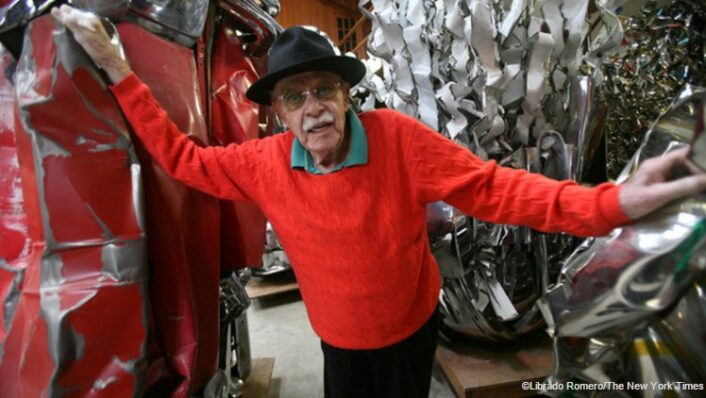Fine Art
Natalia Goncharova’s Tate Retrospective
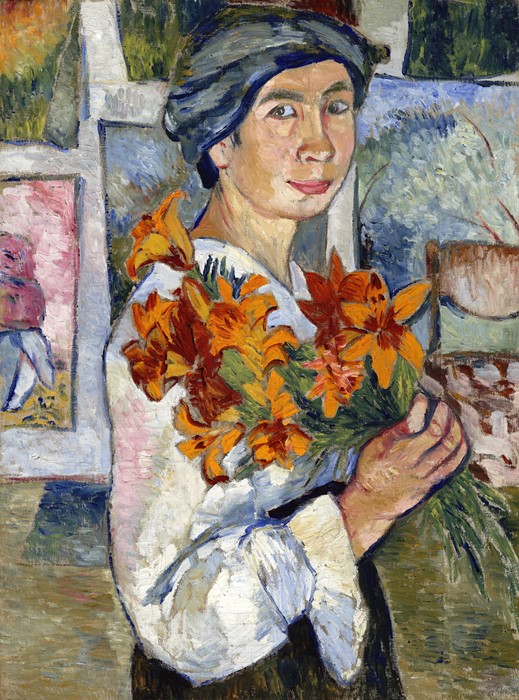
“Self-Portrait with Yellow Lilies”, 1907-1908.
Image courtesy of: Another Magazine
Over the summer, Tate Modern presented a retrospective on Natalia Goncharova. The show hoped to reinstate Goncharova as the leader of Russian and international avant-garde art in the periods before and during the war of the 20th century.
Goncharova followed her father’s footsteps and began her studies at the Moscow Institute of Painting, Sculpture and Architecture as a sculptor. It was during this time that she met her life-partner, fellow artist Mikhail Larionov. During this time (at the end of the century) in Russia, gender segregation in official art institutes was abolished; however, women were still denied the right to get a diploma upon completion. Goncharova left to train at Ilia Mashkov and Alexander Mikhailovsky’s studio where she was able to study, for example, both male and female nudes… and her curriculum included everything it would have had she completed her studies at the Moscow Institute as a male.
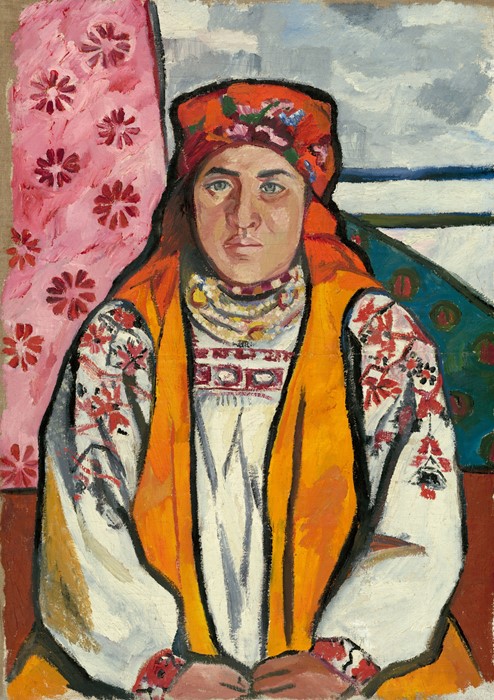
“Peasant Woman from Tula Province”, 1910.
Image courtesy of: Another Magazine
1913 was the most important year of Goncharova’s professional career as an avant-garde artist. At a show at Moscow’s prestigious Art Salon, Goncharova presented 800 works: drawings, paintings, and fashion designs. Landing this show was a coup considering Goncharova’s gender, and the exhibition was deemed as “unprecedentedly diverse.”
The 1913 exhibition opened new channels and new perspectives in Russia; and it placed the female artist at the heart of Modernism in her Motherland. Following this exhibition, Goncharova gained national acclaim, placing her ahead of male contemporaries such as Marc Chagall and Wassily Kandinsky.
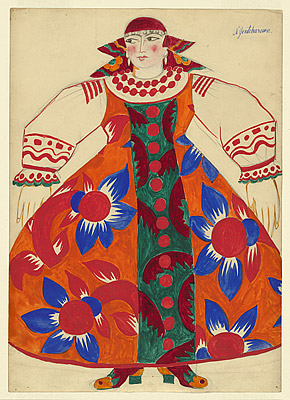
“Peasant Woman”, 1937. Costume design for Le Coq d’Or (ballet). Gouache and pencil on cardboard.
Dimensions are: 37.8 cm. (height) x 26.8 cm. (width)
Image courtesy of: National Gallery of Australia
The Art Salon show was considered by some to be an early retrospective. The pieces shown were landscapes, still lifes, urbane and peasant scenes, religious stories, and costume designs; and all of these showed a creative energy. Much of her work was filled with bold colors and the traditional patterns of rural Russian folk culture of Goncharova’s youth.
As an established leader of the avant-garde movement, Goncharova caught the attention of Sergei Diachilev, founder of Ballets Russes who asked her to design for his “Le Coq d’or” production. For the remainder of her life, the artist was involved with theater.
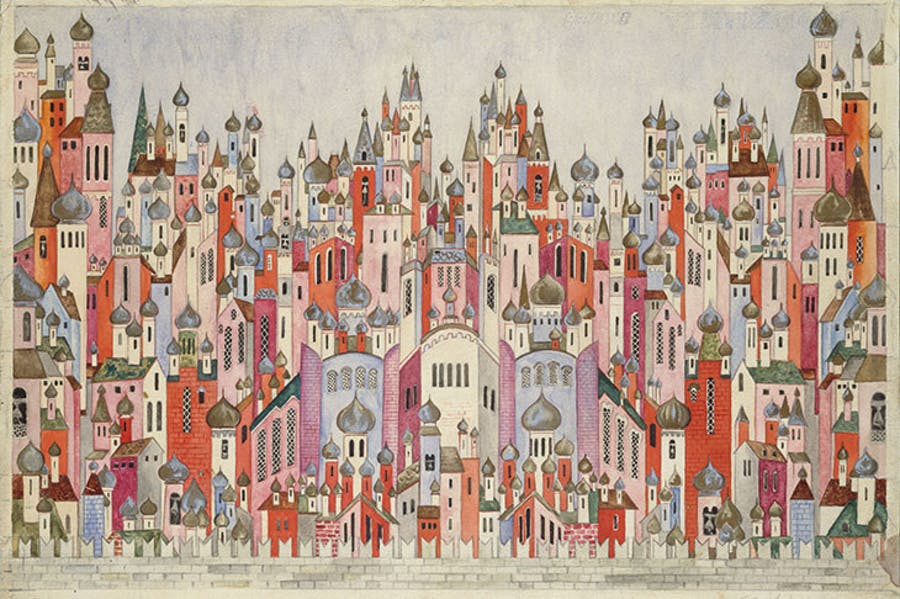
Set design for the backcloth in the final scene of “The Firebird”, (1954).
Image courtesy of: Apollo Magazine
Goncharova was often times accused of trying too hard and of lacking originality; and critics accused her of copying the European modernists in order to appeal to the general market. The Rayonist style was popular with Goncharova, it was similar to the Russian version of Cubism. In defense of herself Goncharova said, “In France, Picasso is the foremost talented artist working in the cubist manner; in Russia, it is your humble servant.”
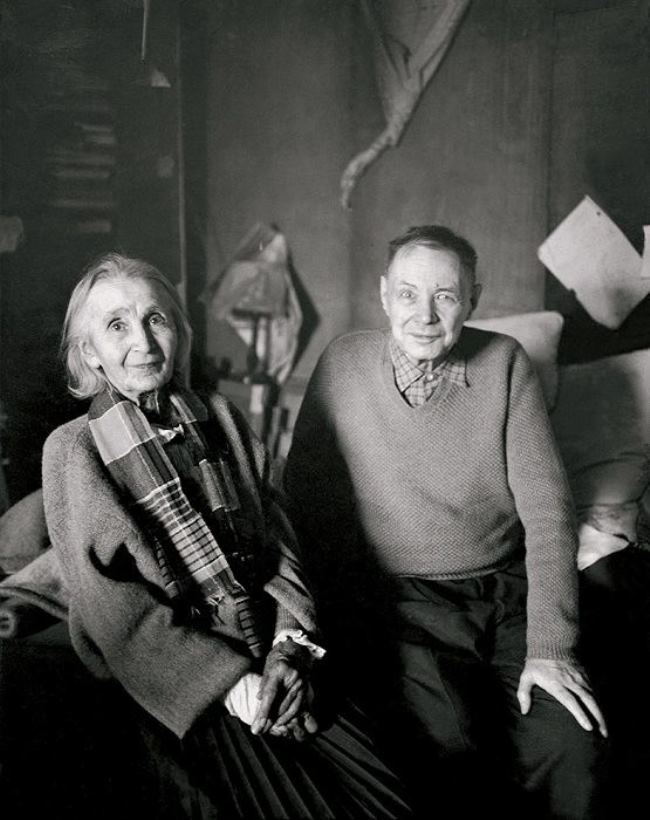
Natalia Goncharova and her lifelong partner, Mikhail Larionov, 1956.
Image courtesy: Beautiful Rus
In today’s times, it is especially exciting to be rediscovering Goncharova. In Moscow, she managed to perfectly navigate mass political and social unrest. She was also adept at presenting Russia’s public cultural life to the world. She was admirable in her defiance of gender norms, often times flaunting “inappropriate womanly behavior”. She led group demonstrations on the streets of Moscow and co-wrote manifestos, things seen as unbefitting of a woman during those times.
Despite their deep love of Russia, sadly Goncharova and Larionov were never able to return to Russia after World War I. We think that Goncharova would be pleased to know that today’s state-run Tretyakov Gallery is the largest sole collector of her work, owning 413 paintings and 6,924 works on paper, and archival and photographic materials.

